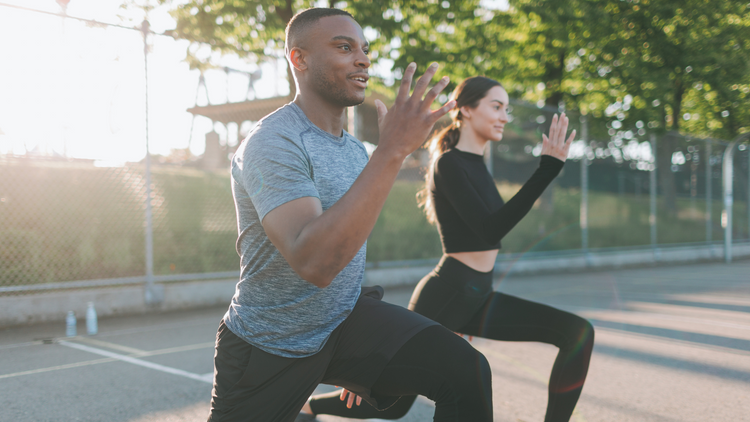What Size Kettlebell?

Understanding the Importance of Starting Weight
What is a good starting weight for kettlebells? So you’re sold on the idea that kettlebells can make you stronger. Welcome to the club. Now it’s time to pick a bell (or three) to add to your training arsenal. Here is what you should know before getting started with kettlebells. It’s easy to get caught up in the "bigger is better" mentality and want to grab a few heavy bells. The truth is you want to master with full control each weight before moving on to the next. Certain movements will require heavier bells, but others will need almost excessively light ones especially as you start things off.
Consider Pre-Existing Injuries and Health Concerns
The first thing you want to take into account is if you have any injuries or issues particularly when it comes to you shoulders, back, wrists, elbows, or hips. These areas tend to get aggravated quickly so you want be careful before trying too much. If there aren’t any serious pre-existing issues then let’s move onto the type of bells.
Choosing the Right Type of Kettlebell
Personally I love competition kettlebells even as a non kettlebell sport athlete because of the comfort. The larger diameter of the bell allows for a more comfortable rack position and the handle is much wider allowing for two hands with even lighter weights. Because they are all the same size whether I’m practicing with a 16kg or 48kg they’re always going to sit at the same place on my arm. Going back to the weight, this guide was how I was able to determine starting points for new and online clients: I would break things down into a beginner, intermediate and advanced bodyweight standard and then have kettlebell options accordingly. Keep in mind if it was a client who was much older or was dealing with an issue we’d scale back or even go through the movement patterns without any weight. You want to keep in mind that there’s definitely a learning curve when it comes to kettlebell training based on the off-center mass of the bell and unique movements. Make sure to go through all the levels of the Kettlebell section of Living.Fit and if you have the opportunity to join us at a Foundation to Flow Certification take it! Beginner Female:
- Can hold high plank (top of pushup position) for 20-30 seconds without breaking at hips or shoulders
- Can hang from pull up bar for 10-20 seconds
- Can perform 20 full range bodyweight squats without stopping
- Can perform 10 sit-ups with feet anchored
Intermediate Female:
- Can hold high plank for 45+ seconds
- Can hang from pullup bar for 20-30 seconds
- Can perform 35 full range bodyweight squats without stopping
- Can perform 20 sit-ups with feet anchored
Advanced Female:
- Can perform 5+ full depth push-ups with knees off the ground
- Can hang from pull-up bar for 60+ seconds or perform a pullup
- Can perform 50+ full range bodyweight squats without stopping
- Can perform 30+ sit-ups with feet anchored without stopping
Bodyweight Standards for Female Beginners, Intermediates, and Advanced
With that the breakdown would be as follows (if I were to pick three different-sized bells for the client) Beginner: 4kg, 12kg, 20kgIntermediate: 8kg, 16kg, 24kgAdvanced: 12kg, 16kg, 28kg
- Deadlift - 16kg - 20kg
- Dead start Clean - 8kg - 20kg
- Press - 4kg - 12kg
- Goblet Squat - 8kg - 16kg
- Row - 8kg - 20kg
- Swing - 12kg - 28kg
- Half Get Up - 4kg - 16kg
- Half Kneeling Snatch - 4kg - 12kg
Of course, the sky’s the limit on how heavy you go. I’ve had female clients push press 32kg and clean 40kg and higher. These weren’t Olympians either. I’m talking average women with above average goals of strength and conditioning. As for men the bodyweight standard would be as follows:
Beginner:
- Can perform 5 full depth push ups with knees off the ground
- Can hang from pull up bar for 20-30 seconds
- Can perform 20 full range bodyweight squats
- Can perform 15 sit ups
Intermediate:
- Can perform 10+ push-ups
- Can perform 1-5 strict pull-ups
- Can perform 35 full range bodyweight squats
- Can perform 30 sit-ups
Advanced:
- Can perform 20+ pushups
- Can perform 10+ strict pullups
- Can perform 50+ bodyweight squats
- Can perform 50+ situps
With that I can typically recommend the following weights: Beginner: 12kg, 20kg, 24kgIntermediate: 16kg, 20kg, 28kgAdvanced 20kg, 24kg, 32kg
- Deadlift - 24kg - 32kg
- Dead start Clean - 16kg - 20kg
- Press - 12kg - 20kg
- Goblet Squat - 16kg - 24kg
- Row - 16kg - 32kg
- Swing - 16kg - 32kg
- Half Get Up - 12kg - 24kg
- Half Kneeling Snatch - 12kg - 20kg
Of course, if you’re markedly strong you can go heavier especially for slower movements like rows and deadlifts and even ballistic movements like swings, but just because you can doesn’t mean you should. New kettlebell users need to focus on technique above all else. A bad swing typically won’t hurt you. Multiple swings with form off will potentially start to aggravate you.
Swings performed weekly (or even daily) slightly off can cause issues down the road. Nip it in the bud with perfect form and not only will you stay injury free, you’ll move up in weight fairly quickly.As you can see there are some bells that show up pretty consistently across the board. The outliers of the deadlift and kneeling snatch will force you to consider a very heavy and very light weight. In the end it will be worth it. There are many ways to make a light bell more difficult which I go into full detail in our kettlebell certification.
Author
Marcus Martinez
Master Kettlebell Coach










